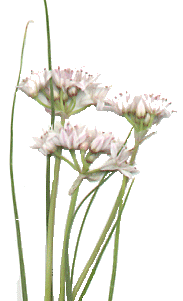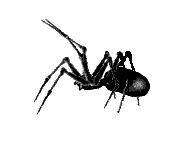![[ poison ivy]](pic/poisoni.gif ) 24 Mar 1999
24 Mar 1999Looks can be decieving! This bright green, interesting little vine is known in our area as POISON IVY. It's not a "wild flower" but it is a "wild thing" and people need to know what it looks like. I had not been able to find a picture of it so decided to scan a slip of it and put it here.It is abundant in our yard and climbs up our trees. We fight it as many people are VERY susceptible to its poisonous juices. It never bothered me untill about 8 years ago and then it made up for all the times I got by! I have learned to keep my distance. In order to get a scan of it I used a paper towel to wrap around the stem in order to break it off, then used tweezers to handle it. Washed my hands and the tweezers in household bleach to nuetralize the poison.
There is another vine that looks a lot like it, has nearly the same shape of leaf, but it seems to be a bit finer leaf, a bit shinier and crisper..GET NEW PAGE NUM .....see page 6. This one is more of a matt finish. If in doubt, don't touch until you know what it is. Also the trumpet vine leaves slightly resemble it. Just be careful!.
![[ Commelinaceae]](pic/commel.gif )

![[ dogwood ]](pic/dogwood.gif)
![[ sassfras.gif
]](pic/sassfras.gif)


